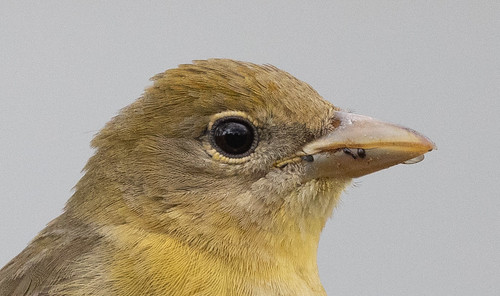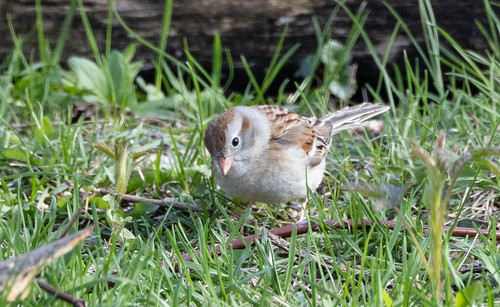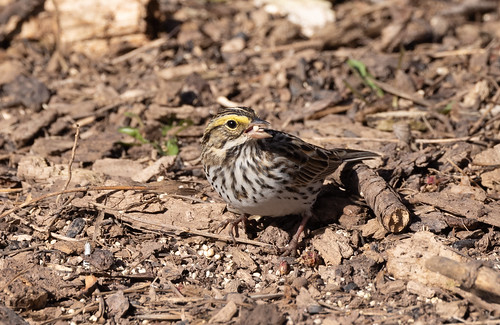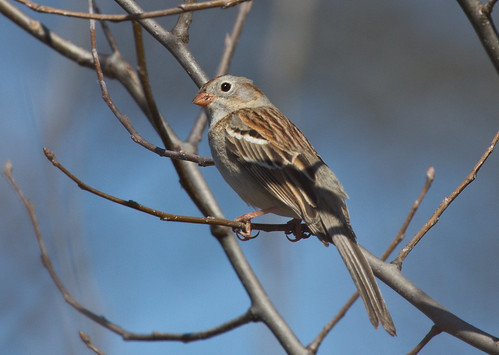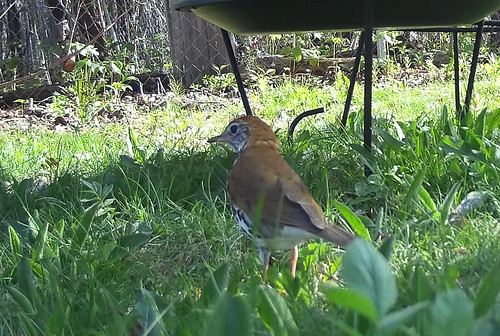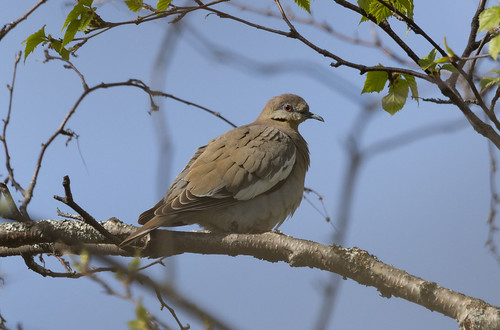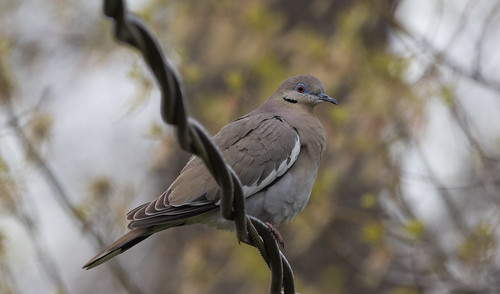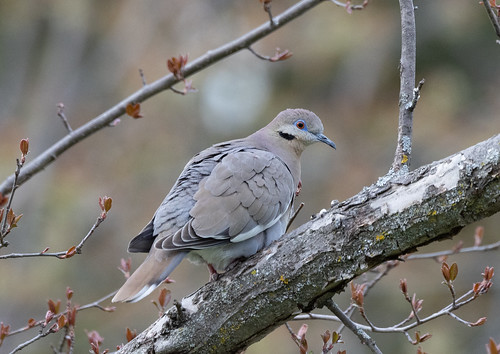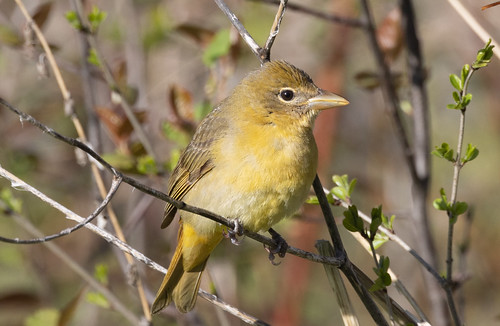Last week, I experienced a 24-hour period I’ll never forget. I’ve been scattering white millet here and there in my yard during this year’s amazing sparrow migration. On Tuesday morning, just a few minutes before I had to leave for my daughter’s house to babysit Walter, I spotted something I’ve never seen here in the 41 years we’ve lived on Peabody Street—a Field Sparrow!
After living here so long, it’s unusual for me to add new yard birds, and this has been a most yearned for species. Earlier this month, I mentioned how with climate change we might start seeing Field Sparrows more up here, but I certainly didn’t expect one to turn up so soon, and in my own yard!
When I took ornithology in 1976, I did my field research project on the Savannah Sparrow and inadvertently learned something cool about Field Sparrows. (Coincidentally, a Savannah Sparrow also showed up in my yard for a week or so, even singing a few times.) For my class project, I mapped out all the Savannah Sparrow territorial boundaries in my study area by playing tape recordings of their song. If I was on a Savannah Sparrow territory, that bird would fly in, and if I was on a border between two territories, or where three territories intersected, all the owners would respond.
But wherever I was, the moment I played a Savannah Sparrow recording, I got a response from one or two Field Sparrows. Their beautiful whistled song is entirely different from the short, buzzy Savannah Sparrow’s. In class I’d learned that mapping territories is straightforward and simple, but as it turns out, real-life birds add a lot of wonderful complexities. And Field Sparrows are not just complex—they’re unpredictable in another unexpectedly wonderful way. One researcher documented a pair nesting less than 2 feet from a pair of Eastern Towhees, and both species fed the young at both nests. In another case, a pair of Field Sparrows and a pair of Common Yellowthroats actually shared the same nest, both incubating full clutches at the same time. I treasured Field Sparrows long before I knew that. It’s yet another case in which the more I learn about a bird, the more wonderful it turns out to be. So I was beyond thrilled to see one right here in my own backyard.
Before this, the most recent yard bird I’d added was a Wood Thrush last May, so this was a red-letter day for me, but I couldn’t stay home to savor it—I had to get to my grandson’s to babysit. I alerted a small birding network that the Field Sparrow was at my place and drove off.
While Walter was napping and I was looking out his window, I discovered a pair of chickadees apparently excavating a nest cavity on the backside of a tree in the woods across Tischer Creek. From my daughter's property, I can’t see the hole, but I could see the birds disappearing and coming out with wood chips. I watched them for 15 minutes or so, and then one of them alighted on the tree closest to Katie’s window and fluttered its wings. Its mate alighted in the branch above it, fluttered its wings back, and sauntered closer and closer, both birds quivering and fluttering their wings. And suddenly I had a full, X-rated view of baby chickadee production. I couldn't get a photo, but this was through the window glass anyway. Yep—a red-letter day for sure!
Right as the two birds were getting back to business as usual, my phone pinged with a text message—Jim Lind and Peder Swingen, who had gone to my place to get the Field Sparrow, had found a White-winged Dove right there on Peabody Street!
Now it’s one thing to see a Field Sparrow in my yard—they at least belong in Minnesota. The White-winged Dove is a southwestern bird that was once fairly restricted to desert thickets—in Arizona, it specialized on saguaro seeds. Recently, it’s been expanding its range eastward—I see it on every trip now when I visit my son in Florida—and it’s also been expanding its range northward. The furthest north I’d seen one before was Kansas. In 2019, when I was on a road trip to birding festivals in Indiana and Maine, Jim Lind discovered one in Two Harbors. Jim has amazing rare-dove karma—he’s also the one who found an Inca Dove in Two Harbors—so it was fitting that he was the one who wrote the text message about this bird.
A long time ago, birders in Southeast Arizona used to stop for a break at a roadside picnic spot called the Patagonia Rest Stop,. People would take a break from birding at the picnic table and restrooms. But then somebody noticed a rare bird. When word got out, more and more birders stopped for more than just a break. With so many eyes scrutinizing every inch of this small roadside picnic spot for one rare bird, other rarities were noticed as well, even though this was just a regular old roadside rest stop surrounded by plenty of much better Arizona habitat. When acquisitive birders gather at even the most ordinary spot, any rarities that might be there are going to be noticed. This phenomenon is called the Patagonia Picnic Table Effect. And it certainly was on display in my backyard Tuesday!
I get so much fun and joy babysitting Walter, and virtually never feel like there’s something else I’d rather be doing, but to have such an extraordinarily rare bird in my own yard right that moment was a little more than I could handle. Katie was in the middle of an important meeting, but my son-in-law, who couldn’t be considered a birder by any stretch of the imagination, is most understanding about his mother-in-law’s obsessions. His workday was far from over, but he offered to multi-task so I could add this exceptional bird to my state, county, city, and backyard lists.
Several birders were in my backyard when I got there, as was the dove. And befitting that Patagonia Picnic Table Effect, several of the birders were sitting at my picnic table! I didn’t get any good photos—the bird stayed in a tangle of dogwood and Virginia creeper while feeding on the ground and perching on my fence, and after 15 minutes or so, it flew off. Most of the birders disbanded and I went into the house.
Ten or 15 minutes later, the White-winged Dove was back, and for the next few hours, the bird and birders came and went. It was at one feeder close to the house but the window was closed and I didn’t want to risk scaring it away, so the photos I took there were through the glass.
Starting at first light on Wednesday, I searched everywhere in my backyard. The dove was gone but the Field Sparrow was still there.
Eventually I went upstairs to fill my home office window feeder, when what to my wondering eyes should appear but a greenish yellow tanager! I’ve seen more Scarlet Tanagers than usual this year. As of Wednesday, all of them had been gorgeous males.
Now I was finally seeing a female, but she looked wrong for Scarlet. Her wings and tail didn’t show a trace of black—they were much closer to the color of her back—and her bill looked a bit too long. She was a Summer Tanager! Yep, within less than 24 hours, I'd seen three extremely rare birds in my own backyard!
Summer Tanagers are seen in northern Minnesota much more often than Field Sparrows or White-winged Doves—indeed, one turned up in my own neighborhood, a few blocks from my house, in October 1981, my very first autumn in Duluth. I saw a stunning male along the Red Cedar River on the Michigan State University campus in May 1976, but the field guide map showed them south of Michigan and I was too inexperienced to trust my own eyes or judgment, so I didn't add it to my life list until the following month when I saw one where he was supposed to be, on Skidaway Island in Georgia.
Summer Tanagers have always wandered, so random appearances up here are not really indicative of climate change, but increasing sightings of them are consistent with both temperature and vegetation changes due to warming. As with Red-bellied Woodpeckers and cardinals before them, these random sightings are growing more common, so eventually a male and female will meet and nest up here. And one day, probably not in my lifetime but quite likely in my children's, the species may become established here.
The tanager has stuck around through at least today (Sunday), and most of the birders who have come to see her have managed to get at least a glimpse. She’s been coming to my office window feeder as well as my other oriole feeders, and spends much of her time at my neighbor Jeanne Tonkin’s house as well.
I don’t know how long she’ll stay around our corner of Peabody Street—the White-winged Dove was not seen again after Tuesday, and the Field Sparrow disappeared on Thursday—but it’s sure been lovely hosting this exceptional trio. I can’t imagine I’ll ever have a 24-hour period again in which I add three new birds to my yard list. Serendipity? The Patagonia Picnic Table Effect? It’s fun to have cool terms for birding phenomena, but really, I’m just grateful to be hanging out on this planet for yet another spring to witness yet another of the myriad miracles of migration.
